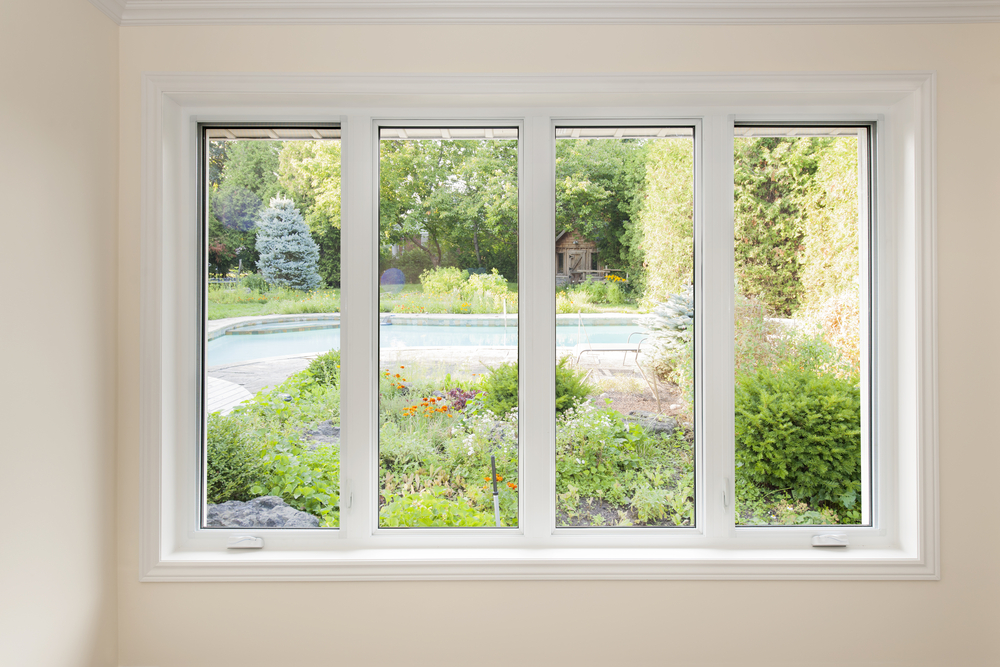

We may earn revenue from the products available on this page and participate in affiliate programs. Learn More ›
Windows add air and light to a home, which can make properly securing them a difficult prospect—most of the methods that provide the highest level of security would interfere with one or both of those benefits. Glass is easily breakable, and an open or broken window provides easy access to a home, even if the window is raised or on the second floor. Bars are an easy option that drastically reduce the chance of an intruder getting into a home, enabling residents to almost burglar-proof windows, but many people have other safety concerns about the bars or just don’t like the look. It’s possible for homeowners to make windows truly secure and protect their home without the use of window bars by taking a few extra steps to learn how to secure windows.
Before You Begin…
While a lot of time and space in the security market focuses on doors, windows are actually even more vulnerable. Because of the many types and styles of windows, there’s no standard size or style of lock that can be applied to every window, so even the most determined customer may be hard-pressed to find a good security solution in the aisles of a home improvement store or online.
Windows present three types of security hazard:
- First, they provide visual access to the interior of the home, allowing potential burglars to literally “window shop” the home and see what they might take.
- Second, windows can easily be broken and climbed through.
- Finally, homeowners often overlook the security of their windows, especially on higher floors.
Window bars can help prevent breakage and intrusion, and largely negate the value of visual access. Usually welded or permanently attached to the outside of the house, window bars prevent an intruder from getting close enough to the window to break it or access the window if it is broken. They provide outstanding security for windows. However, there’s a fine line between making a home truly secure and creating the appearance of living in a fortress—and window bars cross the fortress line for many people. Modern window bars can be highly decorative, but they’re still bars, and the sense of being imprisoned may just be too much.
In addition, some people have valid concerns about fire safety. Window bars can be installed with a mechanism that allows them to be opened from the inside in an emergency, but that also reduces the security of the bars (if they can be opened from the inside, a creative burglar might be able to figure out how to open them from the outside). If window bars aren’t the right fit for a home’s security, there are nine simple steps homeowners can take to make their windows an obstacle for intruders and secure home access points from uninvited guests.
STEP 1: Upgrade your windows.
Before taking any other steps, homeowners will want to assess the condition and quality of the existing windows. Window replacement costs are not inexpensive, but if the existing windows are in bad shape, it may be less expensive to replace them that to add security features to the windows already in place. New windows have many features available that can enhance their security, including strong locks, integrated night locks, double glazing, and laminated or reinforced glass, which make it more difficult to break in. If the windows are in decent shape, the homeowner can move on to the next step. But if the windows are old and starting to lose their structure, purchasing new ones will enhance the home’s security while also potentially decreasing heating and cooling costs.
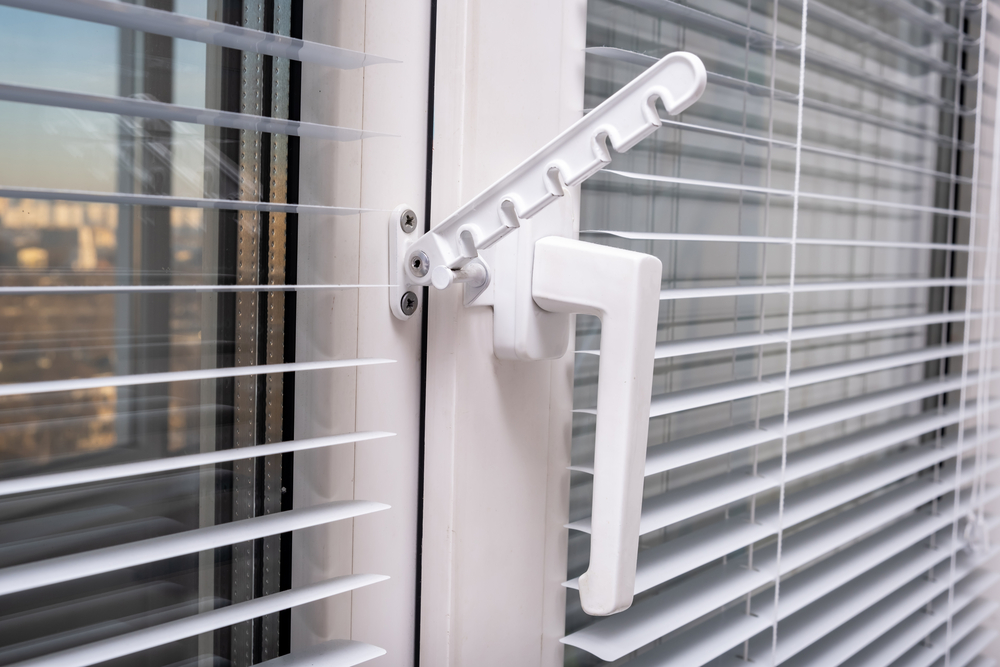
STEP 2: Install secure locks.
The first step in securing windows to prevent home invasion is to make sure they’re actually locked. Too often, residents open windows for fresh air, and then forget to flip the lock when they close them, which is like an open invitation to an intruder. If the home’s windows still have the single default twist lock they came with, it’s time to upgrade. The goal of a good window lock is to remove the options for an intruder to force the window open, leaving only the option of noisily breaking the glass. The best lock for a particular window will depend on how the window opens, as the geometry of the locks will be different based on the angle. On a double-hung window, a basic single-sash lock can be flicked open with a butter knife or putty knife by an experienced burglar.
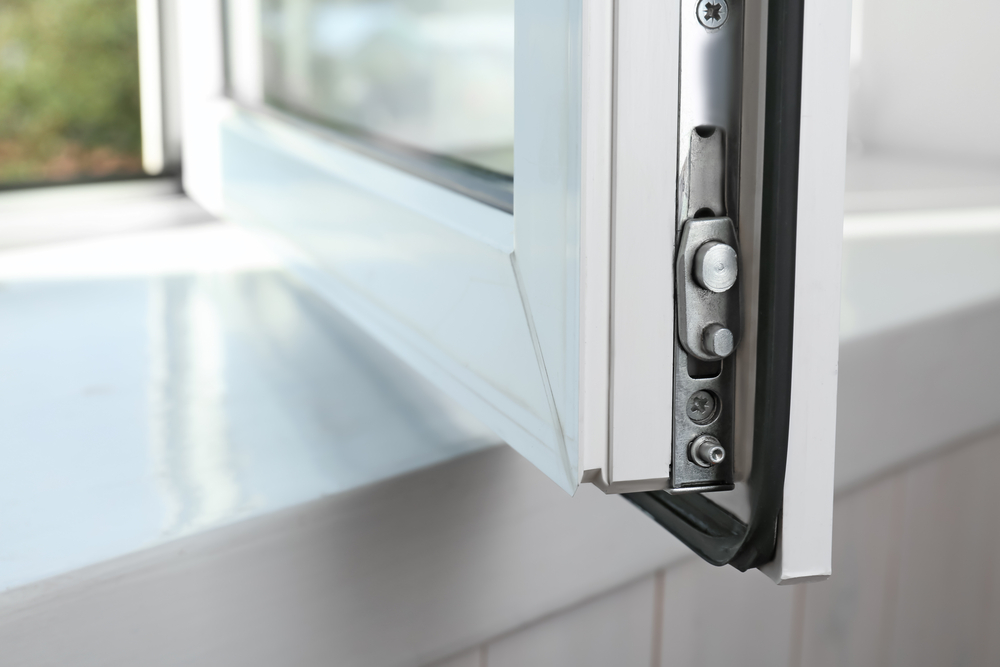
The installation of an additional sash lock (a hinged wedge lock that gets larger and more secure if the window is forced up) a folding lock that prevents the window from being opened past the point at which the lock is affixed, or a keyed sash lock are all significant improvements over the basic single-sash lock. Casement windows are already high-security windows; in fact, they’re one of the most secure types of openable windows because there’s no leverage point to force them. However, keyed locks are available to secure casements when they’re closed, and chain locks can be added to prevent casements from being pushed open farther than the resident would like when they’re open. Sliding windows can be secured in much the same way that sliding doors are. Screws driven into the tracks or dowels placed in the tracks prevent the window from sliding too far open, and metal clips or bars can prevent them from being opened at all.
Many of these options also apartment security, as renters may not be able to permanently add locks or upgrade their windows. Some types of wedge locks simply slide between the sashes with no hardware, and dowels can easily be cut to prevent double-hung and sliding windows from opening in rental units.
A note of caution: It’s always important for residents to bear in mind that windows are egress points in case of fire, so if they opt for keyed window locks, it’s of utmost importance that the keys be kept nearby but out of sight and reach from the outside so that the home’s residents can get out quickly if necessary. Other window guards for house security are easier to release quickly and are less dangerous in the event of an emergency.
STEP 3: Consider window grilles or shutters.
Grilles and shutters are window protection similar to bars in that they offer security through obstruction; essentially, they prevent a criminal from accessing the window to attempt a break-in. Grilles are attractive metalwork that are installed on the interior or exterior of the glass, providing artistic curb appeal to the home and preventing anyone from entering through the window. As with window bars, it’s important for residents to make sure there’s a way to remove them to exit through the window if necessary, but they provide excellent security. Shutters do the same.
Security plantation shutters can be closed and latched (and sometimes locked) to cover the window and prevent access while obstructing the view, but they fit stylistically with the appearance of the home. Roll-down shutters, similar to what storefronts use, can be attractively disguised on the outside as a blind or roller shade, but they are actually fitted into a track from which they can’t be dislodged once they’re locked in place. Both of these solutions require measuring, professional installation, and some upkeep, but they offer the security of bars without the prison vibe.
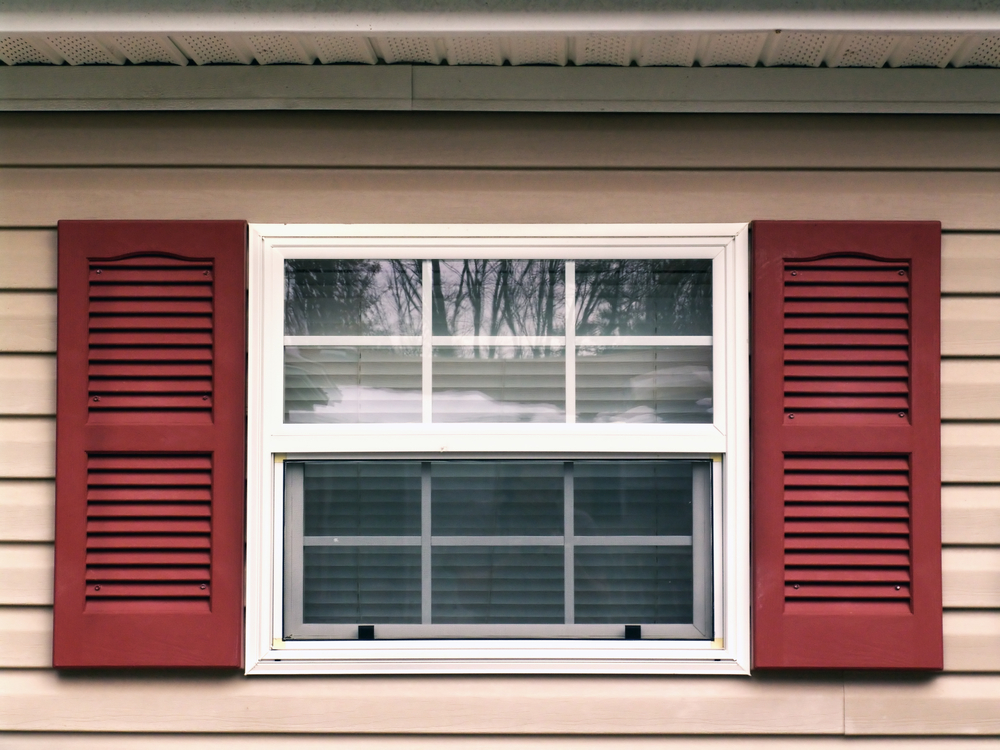
STEP 4: Add window security film.
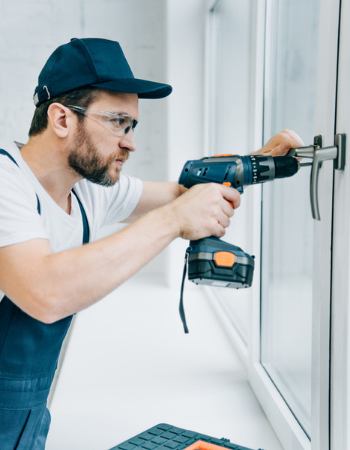
Smashing a window to gain entry to a home is an intruder’s least favorite method of breaking into the house: it’s loud, the intruder could be injured, and it draws attention. However, some intruders will resort to breaking a window if they’re unable to open the window using another method.
Homeowners and renters can make breaking a window more challenging by applying a window protector such as window security film. It’s a thin peel-and-stick vinyl sheet that adheres to the windows and works like a glue on the windows. Should someone attempt to smash the pane, the glass might shatter, but the film won’t, so the intruder will have to cut or push an arm through a sticky sheet of glass shards in order to gain access to the home. Security film is available in either a clear finish that seems to disappear into the glass or in translucent patterns that are ideal for basement window security, since basement windows need to let in light but would benefit from having the view from outside blocked.
STEP 5: Use motion-sensor outdoor lights.
Home intruders prefer darkness so they can do the work of breaking in quickly and without being observed. Installing motion-sensor lights is one of the easiest ways to protect a home from break-ins since they will surprise anyone who is trying to sneak around the corners of a home. Shining a light on the trespasser unexpectedly will momentarily blind them at night, and the light will draw the attention of the home’s residents, neighbors, and passersby, encouraging the would-be intruder to flee before any other lights come on or people appear to see what’s going on. This also has the effect of driving away the criminal before they even get access to the windows.
STEP 6: Secure window air-conditioning units.
The first cool blast of a window air-conditioning unit on a hot summer day is a refreshing relief—but the installation is not complete until the unit is secured in the window frame. Bringing the window sash down on top of the air-conditioning unit isn’t enough to secure a first-floor window; a smart intruder can simply place a shoulder under the exterior part of the air conditioner, shove up and in, and the unit will press the sash up and fall inside the home, leaving the window gaping open until the intruder hops in and closes it. While this method of intrusion is less likely on upper floors, it’s still a good idea to secure window air-conditioning units. But how?
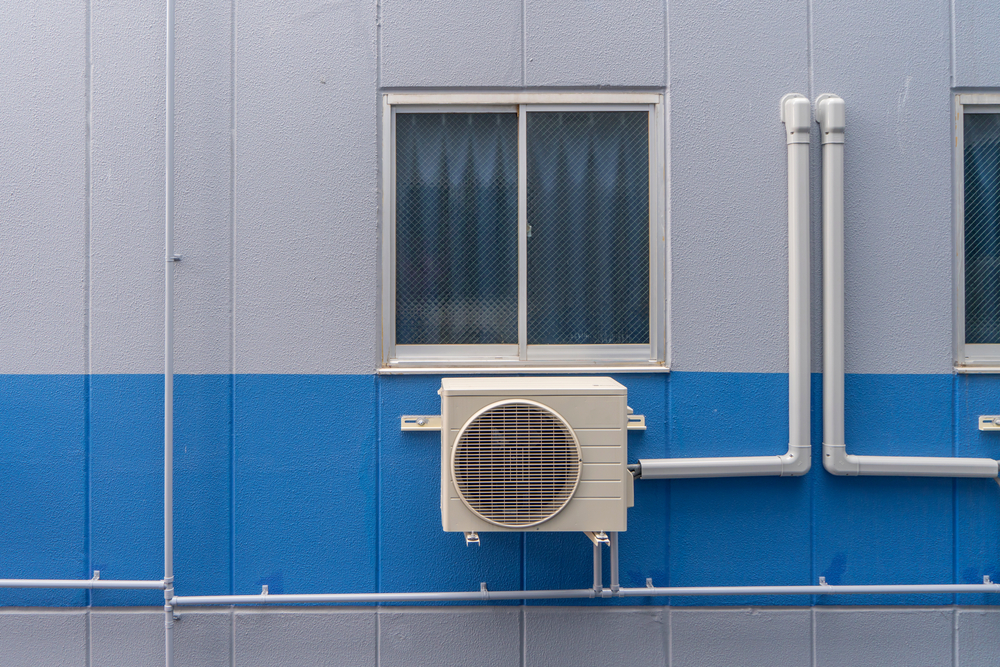
First, the best way to stabilize an air conditioner is to use air-conditioner brackets. Similar to a shelf bracket, these are L-shaped metal brackets that screw into the side of the house to support the air conditioner from below. The unit rests on the bracket and can be secured with screws to hold the bracket and air-conditioning unit together. While brackets can be unscrewed from the outside, it’s going to take a while, and the chances that someone will notice the thief removing the bracket is high.
Once the unit is secured, the window will need to be fixed in place with the sash tightly pressing down on the top of the unit. This can be achieved by using small L-brackets screwed into the top sash to keep the bottom sash from being opened, or by inserting dowels cut to the proper length in between the bottom sash and the top of the window frame.
Finally, most air-conditioning units have screw holes in the flange that the window sits behind. Fitting screws through those holes into the bottom of the window sash will further secure the unit.
One caution: If the windows are double-paned with gas between the panes for insulation, homeowners will want to use caution when screwing into the sashes. If the screws punch through the window too close to the panes of glass, they can rupture the seal on the gas pockets, causing the window to develop condensation between the panes.
STEP 7: Plant thorny shrubs under the window.
This is a simple but effective way to deter intruders from attempting to climb through the windows. There are many species of shrubs and small trees that have beautiful greenery and flowers—and vicious thorns. Planting them in the border garden along the foundation of the home will either prevent potential intruders from attempting to break in or surprise them very unpleasantly when they try. Homeowners will want to use caution not to injure themselves when planting thorny shrubs, and to be sure not to place them in high-traffic areas or they may deter their own family and friends from relaxing in the yard. Strategically placed, thorny shrubs can be a great addition to a security plan while beautifying the yard.

STEP 8: Consider window alarms.
If the windows in a home are particularly low to the ground, or there are many of them in areas that aren’t visible to neighbors or passersby, installing different types of window alarm sensors may be an excellent option.
Window alarms are two-part sensors that trigger an alarm when they move apart from each other: One side is placed on the window frame and one on the moving sash of the window, and when the window is opened an alarm will sound. Alarms can be freestanding units or they can be tied into a smart-home system or larger security system protecting the home, both of which will also immediately send the resident an alert that a sensor has been tripped. The alarm or notification will alert the residents to the intrusion so they can get to safety and call law enforcement, but the alarm sound may also help the intruder decide that it’s time to move on. Window alarms won’t actually stop an intruder from coming in if the intruder is committed, but they’ll provide an early warning to residents and can be very useful when tied into a more robust security system.
STEP 9: Install a home security system with cameras and motion detectors.
Taking these steps will make it harder and noisier for a criminal to break in through the windows. However, one of the best home security systems (such as one from Vivint, ADT, or SimpliSafe) can both deter potential intruders and capture useful information for law enforcement if an intruder boldly continues their approach despite many reasons not to. Visible cameras, motion-detector lights and alarms, door and window sensor alarms, and glass-break sensors can deter criminals before and during a crime. They can also alert residents immediately, buying them precious time to get to safety and call for help.
A DIY system or self-monitored system provides these notifications to the homeowners or renters, but a monitored system will notify a security attendant at the home security company, which can dispatch law enforcement quickly whether the residents are home or not. This allows help to arrive on the scene faster and lets the residents focus on their own safety and well-being. In addition, the best cameras can record critical information that will aid law enforcement in identifying the intruders and hopefully in recovering stolen property. Homeowners may also receive a home insurance discount for security systems with professional monitoring, which can offset the overall home security costs. A home security system deters intruders from approaching the home and offers the residents peace of mind; if someone does try to break through a window, help will be on the way as fast as possible. Furthermore, it reduces the residents’ need to worry about security whether they’re at home or away.
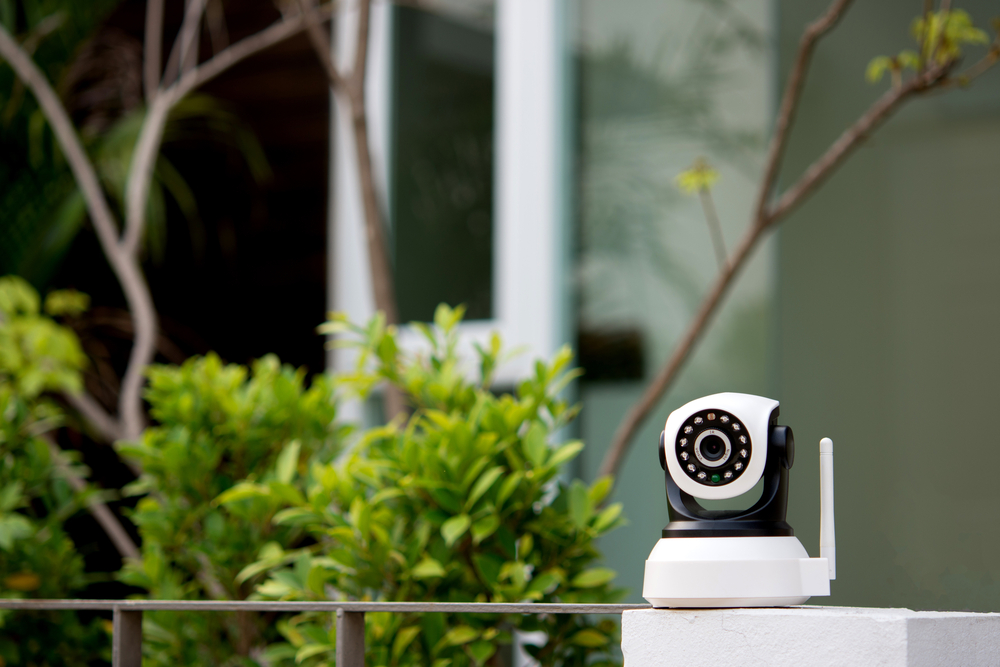
Securing windows requires striking a balance between turning a home into an unapproachable fortress and making it feel safe and secure. As homeowners take measures to make the windows as secure as possible without using window bars, it’s important for them to remember that anything that permanently barricades or closes a window may keep intruders out—but it will also trap the residents inside, which can be dangerous in a fire or other disaster. Homeowners will want to make sure that any security measures put in place are easily reversible from inside, and check them regularly to make sure those mechanisms haven’t rusted or corroded.
These steps will create a hostile atmosphere for potential burglars, make it more difficult for them to gain access to the home through the windows if they decide to try, and fire off alerts with light and sound should they make it through the window. All it takes to make windows safer is a little attention and a few upgrades and alterations; then the residents of the home can relax, knowing they’re secure and protected.
